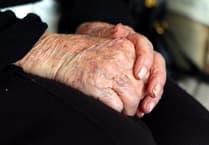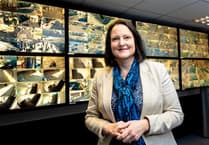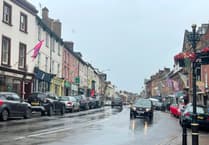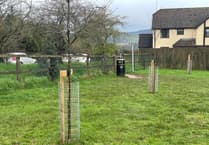A TOTAL of 48 souls braved the foul weather along with Colin Andrews on a recent Wednesday morning to hear about The History of Morris Dancing (MD). Its origins are not known for certain but it is thought that Morris Dancing may have some Pagan elements.
Seen as a descendant of Pagan folk ritual, the tradition of morris dancing has been based on calendar customs and distorted by preconceptions imposed on it by the folklorists of the late 19th and early 20th centuries.
There are ideas that it may have developed from the time of the Moors, who had invaded the Iberian peninsula in 711 and ruled for 800 years. When they surrendered to the Portuguese King Ferdinand and Queen Isabel there were dances in celebration of the Moors leaving; it is thought that Morris dances were based upon these dances.
There are records of Morris dancing from 1458, Alice de Wetenhall of Bury St. Edmunds left a silver cup "sculpted with Moreys dauns" (MD) engraved upon it in her will.
Colin showed us some old engraved pictures of the dancing. MD was popular in the royal courts of Europe and there are still some (MD) in Spain and Italy.
MD was supported by the Church and the Trade Guilds. Henry V11 was also a supporter of MD, having made payments for the “Morrice Dance”. Henry V111 continued with his support, records of Christmas 1515 at Richmond Castle the "moresks" were performed by five dancers and one fool.
In what appears to be a piece of self-promotion, in 1600 Shakespeare actor Will Kemp Morris-danced the 125 miles from London to Norwich via Essex and Suffolk and wrote an account of his journey called "Nine Daies Wonder" (it actually took 23 days). Kemp was a contemporary of Shakespeare. We were shown a picture of Morris Dancers by the Thames from 1601. Here Colin played pipe and drum.
There was a decrease of MD from 1661 - 1690.
The church became disaffected with MD; this was the time of Cromwell. Morris restarted with the restoration but the difference now was the dancers were country folk and not professionals.
During 1720 - 50 MD was located mainly around the Cotswold area and financially supported by country people.
Colin then played "Sweet Jenny Jones" on a button accordion.
The heyday of MD was the middle 1800s. The best known variety of the Morris is that which was collected by Cecil Sharp in the villages on the uplands of Gloucestershire, Oxfordshire and Northamptonshire, and which has therefore become known as “Cotswold Morris”.
With William Kimber they taught MD to men. In the 20th century Mary Kneel taught MD to women, they were at a disadvantage as Cecil Sharp was a traditionalist although the dances were the same. Esperance Morris kept MD going.
In 1934 six men’s clubs were set up but were "male only"! However in the 1950 - 60s women were fed up with the "male only" so set up Women’s Morris Federation, Esperance, which has continued to the present time.
In 1974 Lionel Bacon published a Handbook of Morris Dancing, detailing the beginnings and development of MD but there are numerous publications now.
There is another style of MD, a winter tradition known as "Border Morris". It has a particular style which is simple but also a practice which has been stopped in the last two to three years.
The Border teams would "black up" their faces as a means of not being identified by their employer when the hat was passed around collecting the offers of money.
Morris Dancing is a worldwide activity. There is usually a dance "uniform" which is individual to each team. But Morris Dancers are easily recognised by most of us, with their bells, handkerchiefs, sticks, badges and musical instruments. There was a big vote of thanks to Colin for a very informative, as well as an, interesting presentation.
Colin is a member of the Winkleigh MD group. Their website can be viewed at: http://www.bonnygreen.uk/wmhome.html .
Next meetings: March 16, Lynne Carroll, "Characters and Creatures at Lanyon" - A look behind the scene of a historic Australian Settlers Homestead.
April 20, Ian Barclay, "A history of the BBC".
Sandra Ragalsky for U3A




